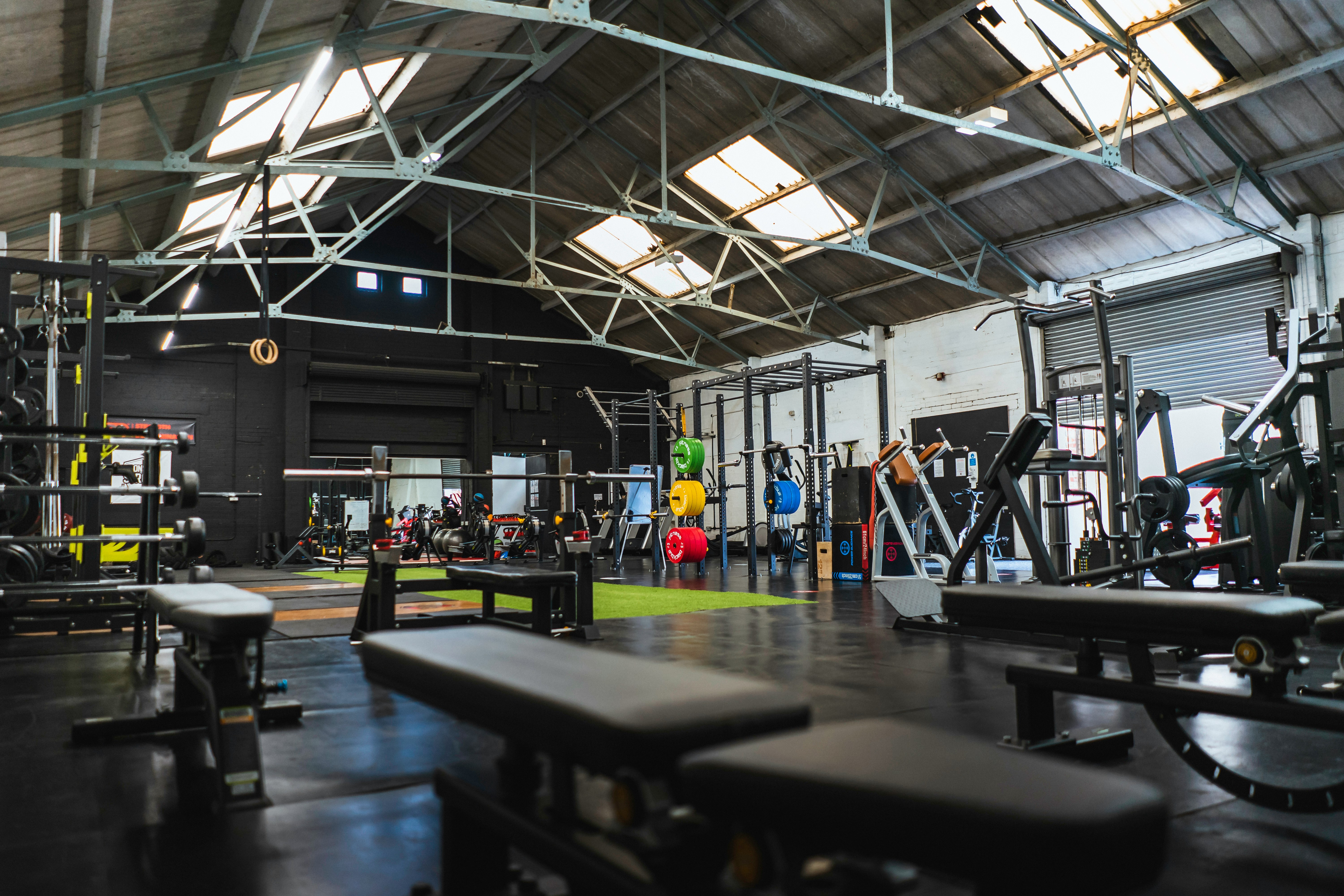Bro Split: Muscle-Building Tradition or Outdated Plan?
Sep 25, 2024
In the world of bodybuilding and fitness, few training methods have garnered as much attention and controversy as the infamous "bro split." Whether you're a seasoned gym-goer or just starting your fitness journey, you've likely heard of this popular workout routine. But what exactly is a bro split, and is it still an effective way to build muscle and strength? In this comprehensive guide, we'll explore the ins and outs of the bro split, its pros and cons, and how it compares to other popular training methods.
What is a Bro Split?
A bro split, also known as a body part split, is a workout routine that dedicates each training session to a specific muscle group or body part. This approach typically involves training 4-6 days per week, with each muscle group being worked once every 5-7 days. The name "bro split" comes from its popularity among bodybuilders and gym enthusiasts, particularly during the golden era of bodybuilding in the 1970s and 1980s.
A typical bro split might look something like this:
Monday: Chest
Tuesday: Back
Wednesday: Legs
Thursday: Shoulders
Friday: Arms
Saturday: Rest
Sunday: Rest
Is Bro Split as Effective as PPL?
One of the most common questions among fitness enthusiasts is whether a bro split is as effective as other popular training splits, such as the Push-Pull-Legs (PPL) routine. To answer this, we need to consider a few factors:
Training Frequency: PPL typically allows for higher training frequency, with each muscle group being worked 2-3 times per week. In contrast, a bro split usually has each muscle group trained only once per week.
Volume Per Session: Bro splits often involve higher volume per muscle group in a single session, as the entire workout is dedicated to one area.
Recovery Time: Bro splits provide more recovery time between training sessions for each muscle group, which can be beneficial for some individuals.
Personal Preference: Some people may find they respond better to one style over the other.
While both approaches can be effective, current research tends to favor higher training frequencies for optimal muscle growth. However, individual factors such as recovery ability, time constraints, and personal enjoyment should also be considered when choosing a training split.
How Many Days is a Bro Split?
A typical bro split usually involves training 4-6 days per week. The exact number of days can vary based on how the exercises are grouped and individual preferences. Some common variations include:
4-day split: Chest/Triceps, Back/Biceps, Legs, Shoulders/Arms
5-day split: Chest, Back, Legs, Shoulders, Arms
6-day split: Chest, Back, Legs, Shoulders, Arms, Abs/Calves
It's important to note that while bro splits often involve more training days than other splits, this doesn't necessarily mean they're more effective. The key is finding a balance between training volume, frequency, and recovery that works best for your goals and lifestyle.

Is Bro Split Good for Natty?
The term "natty" refers to natural bodybuilders who don't use performance-enhancing drugs. For natural lifters, the effectiveness of a bro split can be debated. Here are some considerations:
Pros for natural lifters:
Allows for high volume per muscle group in a single session
Provides ample recovery time between workouts for each muscle group
Can be psychologically satisfying to focus on one area intensely
Cons for natural lifters:
Lower training frequency may not be optimal for muscle protein synthesis
May not provide enough overall training volume for maximum muscle growth
Can lead to muscle imbalances if certain areas are neglected
For many natural lifters, a training split that allows for higher frequency, such as an upper/lower split or full-body routine, might be more effective for muscle growth and strength gains. However, some natural bodybuilders still find success with a bro split, especially when combined with proper nutrition and recovery strategies.
Did Arnold Do a Bro Split?
Arnold Schwarzenegger, one of the most iconic bodybuilders of all time, famously used a variation of the bro split during his competitive years. His routine typically involved training six days a week, often twice a day, with a focus on high volume and intensity. Arnold's split looked something like this:
Monday & Thursday: Chest & Back
Tuesday & Friday: Shoulders & Arms
Wednesday & Saturday: Legs & Lower Back
Sunday: Rest
While Arnold's routine does resemble a bro split in some ways, it's worth noting that he trained each muscle group twice a week, which is more in line with current recommendations for optimal muscle growth.
Does Chris Bumstead Use Bro Split?
Chris Bumstead, the reigning Mr. Olympia Classic Physique champion, has used various training splits throughout his career. While he has experimented with bro splits in the past, his current training approach tends to favor a more frequent training style. Bumstead often uses a PPL-style split or a hybrid approach that allows him to hit muscle groups multiple times per week.
It's important to remember that professional bodybuilders like Bumstead often adjust their training based on their current goals, competition schedule, and individual response to different training methods.
What is the Downside of Bro Split?
While the bro split has its advantages, there are several potential downsides to consider:
Lower Training Frequency: Training each muscle group only once per week may not be optimal for muscle growth and strength gains, especially for natural lifters.
Potential for Muscle Imbalances: Focusing on one muscle group per day can lead to neglecting certain areas or creating muscular imbalances.
Less Efficient for Compound Movements: Bro splits often emphasize isolation exercises over compound movements, which may not be as efficient for overall strength and muscle development.
Longer Workouts: Since you're dedicating an entire session to one muscle group, workouts can become lengthy and potentially lead to burnout.
Suboptimal for Skill Development: For those interested in strength sports or athletic performance, the lower frequency of movement practice may hinder skill development.
Recovery Issues: Some individuals may struggle with recovery when performing high-volume sessions for a single muscle group.
Can You Get Big on Bro Split?
Yes, it is possible to build significant muscle mass using a bro split routine. Many successful bodybuilders have used this approach to achieve impressive physiques. However, whether it's the most efficient method for muscle growth is debatable.
The effectiveness of a bro split for building muscle mass depends on several factors:
Total Training Volume: Ensuring you're performing enough sets and reps for each muscle group over the course of a week is crucial for muscle growth.
Progressive Overload: Consistently increasing the weight, reps, or sets over time is essential for continued muscle growth, regardless of the split used.
Nutrition: Proper nutrition, including adequate protein intake and overall calorie surplus, is crucial for muscle growth.
Recovery: Allowing enough time for rest and recovery between workouts is important for muscle repair and growth.
Individual Response: Some people may respond better to higher frequency training, while others may thrive on lower frequency, higher volume approaches like the bro split.
While a bro split can certainly lead to muscle growth, many lifters find that incorporating more frequent training sessions for each muscle group can lead to better results, especially for natural lifters.
Alternatives to the Bro Split
If you're considering alternatives to the traditional bro split, here are some popular options:
Push-Pull-Legs (PPL): This split involves grouping exercises based on pushing movements, pulling movements, and leg exercises. It typically allows for training each muscle group 2-3 times per week.
Upper/Lower Split: This approach divides workouts into upper body and lower body days, usually allowing for 2-4 training sessions per muscle group per week.
Full Body Workouts: Training the entire body in each session, usually 3-4 times per week, can be highly effective for both muscle growth and strength gains.
Arnold Split: Inspired by Arnold Schwarzenegger's training, this split typically involves chest/back, shoulders/arms, and legs, trained twice per week.
Customized Hybrid Approaches: Combining elements of different training splits to create a personalized routine that fits your goals and schedule.
Making the Bro Split Work for You
If you decide to use a bro split, here are some tips to maximize its effectiveness:
Incorporate Compound Movements: Start each workout with compound exercises like bench press, squats, and deadlifts to ensure overall strength development.
Focus on Progressive Overload: Consistently increase the weight, reps, or sets to continue challenging your muscles.
Don't Neglect Smaller Muscle Groups: Ensure you're giving adequate attention to often-overlooked areas like rear delts, calves, and forearms.
Consider Adding "Touch-Up" Sets: Incorporate a few sets for muscle groups on days other than their dedicated training day to increase frequency.
Pay Attention to Recovery: Ensure you're getting adequate sleep, nutrition, and rest between workouts to support muscle growth and recovery.
Be Flexible: Don't be afraid to adjust your split if you feel certain muscle groups need more attention or if you're not seeing the desired results.
Conclusion: Is the Bro Split Right for You?
The bro split has been a staple in bodybuilding for decades, and while it may not be considered the most optimal approach by current research standards, it can still be an effective way to build muscle and strength. The key is to understand its potential limitations and make informed decisions based on your individual goals, preferences, and response to different training methods.
If you enjoy the focused, high-volume approach of the bro split and are seeing good results, there's no reason to change. However, if you're looking to optimize your training or are struggling to make progress, considering a higher frequency approach or a hybrid method might be beneficial.
Remember, the best workout routine is one that you enjoy and can consistently adhere to over time. Whether you choose a bro split or another training method, focus on progressive overload, proper nutrition, and adequate recovery to achieve your fitness goals.
Ready to take your training to the next level? Let Tidalflow's AI personal trainer create a customized workout plan tailored to your goals, equipment availability, and fitness level. With personalized guidance and real-time adjustments, you'll be on your way to building the physique you've always wanted, regardless of the split you choose. Start your journey to a stronger, more muscular you today!
Ready to get your own Personal Trainer?
It’s time to change the way you work out.













